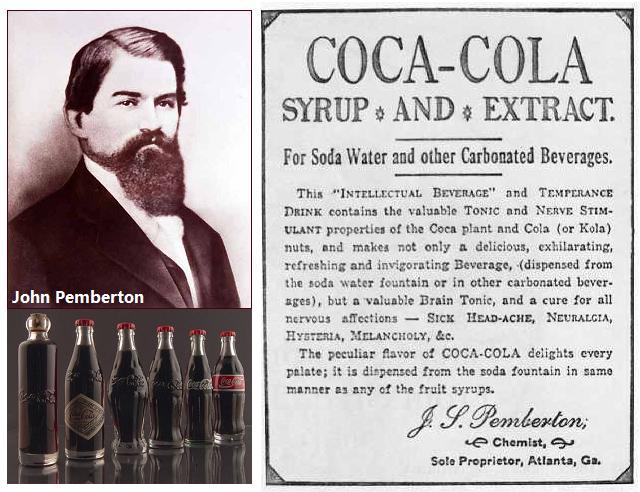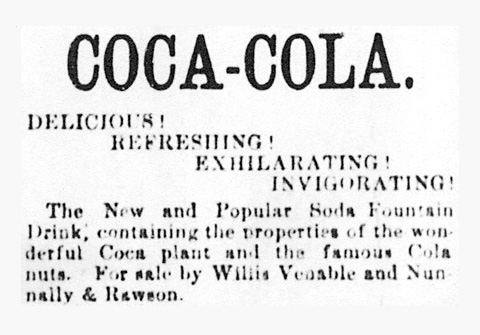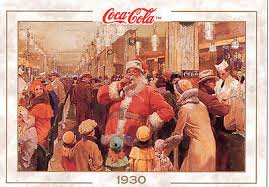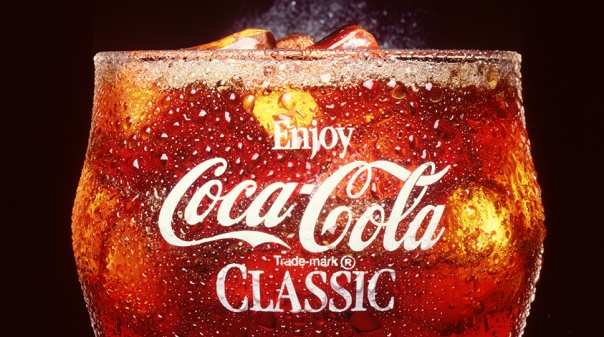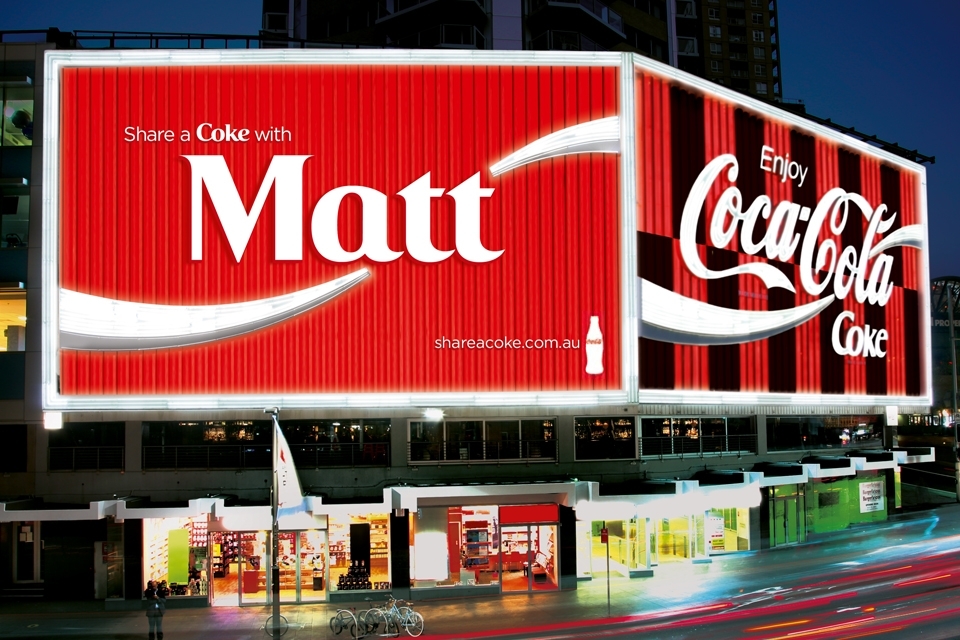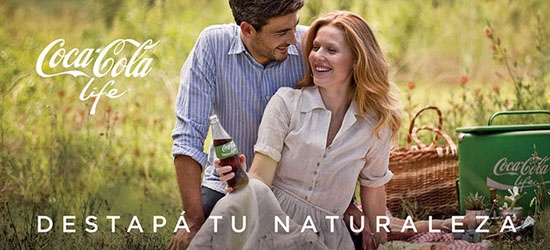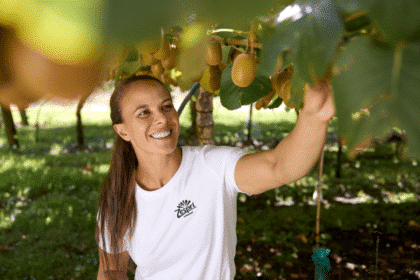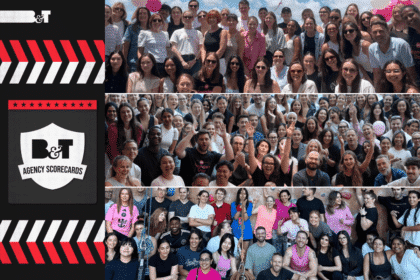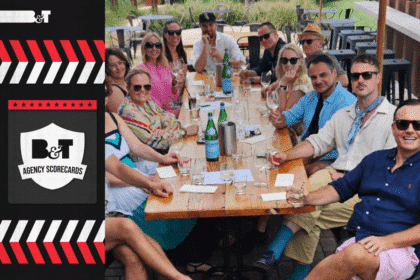The ubiquitous branding of fizzy drink juggernaut Coca-Cola has seen it emerge not only as the inventor of that jolly man in the red suit, but as a global cultural game changer over the last century.
B&T journeys back in time and lifts a few Coca-Cola marketing anecdotes and old school ad campaigns out of the vault. After all, it’s #ThrowbackThursday
1886: Coca Cola is born
It was 128 years ago when the curiosity of an Atlanta pharmacist, Dr. John S. Pemberton, led him to create a tasty fizzy drink that could be sold at soda fountains. And so, the world was introduced to Coca-Cola.
The iconic brand logo and name was masterminded by John Pemberton’s bookkeeper, Frank Mason Robinson, in 1885. The typeface used – Spencerian script – was developed in the mid-19th century and was the the most prevalent font in the United States at that time.
Robinson also played a key part in early Coca-Cola advertising. He recommended to Pemberton that they should give away thousands of free drink coupons, blanket Atlanta in publicity banners and streetcar signs.
1890: Red is the colour of…
Leo Roberts, group marketing manager, Coca-Cola South Pacific, says: “The colour red was used by the trademark as early as the 1890s. A very consistent approach to the use of the colour red (across the globe since 1890) has obviously cemented the relationship between the brand/trademark and the red/white palette.”
1930: Ho, ho, ho
Artist Fred Mizen painted a department-store Santa in a crowd drinking a bottle of Coke. Mizen’s painting was used in print ads during that Christmas season, having appeared in The Saturday Evening Post in December that year.
1941: what’s IN a name?
1941 saw the first use of the nickname “Coke” as an official trademark for the product, with a series of ads informing consumers that “Coke means Coca-Cola”.
Roberts says: “The Coca-Cola System has effectively leveraged the scale of the business to share ideas, import and export best practice and always strive for ‘constructive discontent’ – that is we always want to do better.”
1971: Good Morning Vietnam:
In 1971, the company released an advertisement showing young people from around the world singing a cheerful tune, and Ben Welsh, executive creative director at M&C Saatchi remembers it all too well. He says: “The first Coke ad I ever saw had hundreds of young people from all over the world singing I’d like to teach the world to sing, in perfect harmony… The Vietnam war was still raging and the Kent State University shootings may (I don’t actually remember when it was) also have been top of mind in the US, but here was Coke, the ultimate American icon at the time, telling us all to live together.”
“It was The American Dream in a bottle and we were being invited to share it. I think Coke may have invented teenagers. Not the rebellious ones you find in S.E. Hinton’s The Outsiders, but the good clean living sorts that played ball and went off to war in South East Asia,” says Welsh
1979: Cultural shifts
“Mean” Joe Greene, one of the most forbidding defensemen in NFL history, nearly lost his nickname after appearing in this Coca-Cola commercial that softened his tough-guy image.
Roberts believes this ad is an example that demonstrates Coca Cola’s role in defining American culture by using its high profile to dismantle common stereotypes at that time.
1982: along came SKINNy
Welcome Diet Coke – the sugar-free version of its flagship product.
Diet Coke’s advertising uses slogans including “Just for the taste of it!”. And who could forget this infamous “Diet Coke hunk” ad?
http://youtu.be/TdrE1VMxzoE
1985: Coke Controversy
Coke changes the recipe of its primary product and renames it “New! Coke”, referring to the drink as the “new taste of Coca-Cola”.
Despite research that found Americans prefered the taste of New Coke over original Coke, the public was unsupportive of the re-branding.
Eventually, the company replaces New Coke with the original recipe and changes the name to Coca-Cola Classic.
“Cherry Coke” was also released in 1985, firstly in the US – but it’s now available in markets across the globe.
1993: “always coca cola”
http://youtu.be/DzPjHPD1dZ8
2002: ice cream flavours in fizzy form
Coca-Cola Vanilla is launched in the US and UK, among other markets, before being discontinued in 2005. In 2007 Vanilla Coke was brought back by popular demand.
2005: REAL Men don’t drink no diet
Coke Zero – a no-calorie variation of Coca-Cola – went on sale. The branding was targeted at men, after research had revealed they are put off by products with the word “diet” on them. The Australian launch of Zero has since been used as a benchmark for the roll out of the brand in other countries, and was recognised by The Coca-Cola Company, with a global marketing award for best new product launch.
2010: “Open Happiness”
“Australia has its own unique cultural context and relationship with Coca-Cola – for example; Coca-Cola and Summer are synonymous in Australia,” says Roberts.
2011: Share a Coke
In Australia Coca-Cola launched the Share a Coke campaign, where the Coca-Cola logo was replaced on bottles with the most popular first names in the country. The campaign was paired with a website page, Facebook page and an online “share a virtual Coke”.
Roberts says: “Share a Coke, first developed here in Australia, has been adapted and implemented in more than 50 other countries.”
2013: show me the money:
Published in Best Global Brands 2013 Report, Brand Consultancy Interbrand, valued Coca-Cola at $79,213 billion.
“In July 2013, we made four business commitments to help to address the issue of obesity in Australia. These commitments are to increase the availability of our smaller portion sizes, offer more low kilojoule beverage options, provide transparent nutritional information in more places and help get people moving by supporting physical activity programs,” explains Coca-Cola’s Roberts.
2014: GOING GREEN
Last year, Coke debuted ‘Life’ in Argentina – the first market to trial the “healthier” new product – which uses a blend of sugar and stevia extract. A 200ml serving of Coke Life contains only 36 calories with due to the”naturally sweetening” ingredients.
The product features a green label, with Coke claiming the bottle is made from 30% plant material and is 100% recyclable.
The marketing campaign Coke has employed is full of “green” imagery, and eco-friendly packaging to offer customers a healthier alternative.
Coca-Cola chief marketing and commercial officer Joe Tripodi last year said: “We believe we can be a voice that advocates for positive change and healthy progress.”
“We are reviewing the performance of Coca-Cola Life in South America over the next few months before deciding whether to bring it to Australia. We have made a commitment to look at how we introduce stevia into more of our products in the future and will consider what other countries are already doing well,” says Roberts.
“In Australia, we continue to support brands such as Coke Zero through the latest campaign currently in market. Coming shortly will be a major marketing push to support the new 250ml cans just launched to market. This will see Coke Zero sitting alongside Coke in creative executions,” says Roberts.
http://youtu.be/Lm4oiLzJs2g
In summarising the Coca-Cola dynasty, M&C Saatchi’s Welsh says: “America is still sending its kids off to war and Coke, is still about sharing. In both cases, the technology has improved.”




